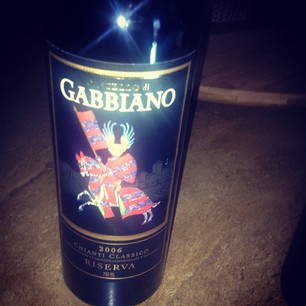In my opinion – “Yes, most of the time.” I am a believer that spending some time with air after opening a bottle helps to finish the wine and make it closer to its optimal drinking state. This is not always the case, but should be considered most of the time. Plus the ritual of decanting a wine can enhance the sensual pleasure of drinking wine. I am not big on “form over function,” but do get joy out of decanting a bottle, watching the wine spiral down the decanter and the smell rising up as the wine breathes. Check out my recent blog post “Wine Foreplay and Sensual Pleasures” to find out more on how sensual, almost erotic decanting wine can be!
The visual and nasal aspects of decanting are both enjoyable, and it builds anticipation for the liquid to hit your palate!
Minimally, all wines should be opened and given several (5 – 10) minutes for any odors that may be still captured in the head space (the air at the top of a bottle of wine regardless if under cork or screw top) of the bottle should be given time to flow out. This will improve the drinking experience by removing any intervening unpleasant smells.
It is difficult to determine the absolute optimal time to open a bottle of wine. Fortunately, many good wines can be drunk over a several year period where they are truly outstanding. However, it is often the case that when we open a bottle, the wine is still a little tight, and exposing it to air for 30 minutes up to several hours can really help the wine. The transformation includes the wine becoming smoother in texture and more mellow in taste. The little bit of remaining tightness is gone or significantly reduced.
In general, decanting a wine for 30 minutes up to two hours should do the trick. However, some really complex and very well structured wines that demand to be in the bottle for 10 – 20 years, may require a decanting period of two to three hours or even longer. The 1987 Lindemans Pyrus for example, should be decanted for 6 – 8 hours to provide optimal drinking pleasure. This is because of the nature and role of the Cabernet Franc grape as part of the blend. This is a complex grape which evolves over a very long period of time, making some of the 20 – 25 year old Pyrus a truly magnificent drink. Yet, it needs long exposure to air to really complete the process.
I tasted this wine a while back at Lindeman’s after it was open only two hours and while I liked the wine, I felt it had bit of an aftertaste, so had a difficult time committing to buying much of the wine. My bride though who has a much better palate than me, loved the wine and insisted we go back the following day to get some more. (This was a $90 bottle of wine, but because the bottle had been shortfilled at 747 ml instead of the full 750 ml, they were going for $30 per bottle). The bottle had stayed open over night and when I tried it the following morning, it was absolutely brilliant! We ended up buying the last four bottles and I am really glad we did as we only have three bottles left now. This is a complex wine that is 25 years old, and it needs a lot of time to breathe! But most bottles require far less decanting time to finish off nicely.
However, be very careful and I suggest not decanting very old and fragile wines for too long. They lose flavor far too quickly and will become tepid or even flat. While many wines can be drunk over several days, older, fragile wines should be drunk within an hour after being opened.
Most people only think of decanting red wines, but I have found great benefit in decanting really large, robust white wines also. 5 – 20 year old aged Chardonnay, Semillon and other whites deserve an hour of decanting to really bring out the flavor, as does truly great Montrachet wines.
And in case there is any doubt, do not decant a Champagne! It will quickly lose its bubbles! Drink Champagne right from the bottle!
















